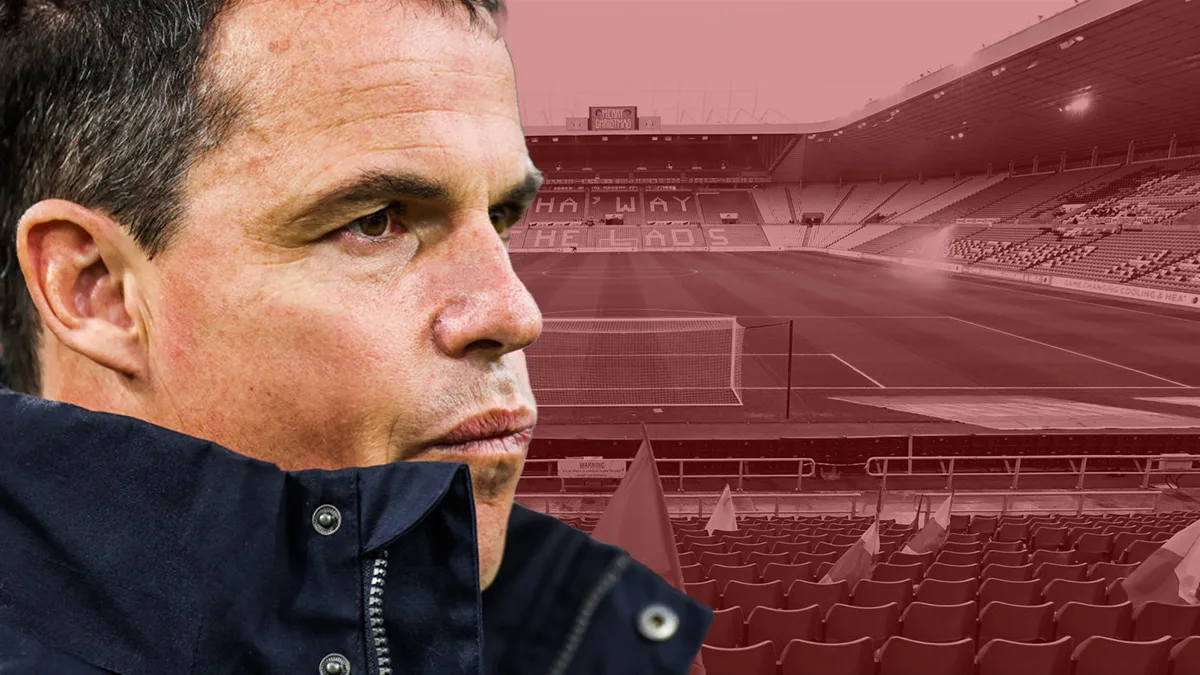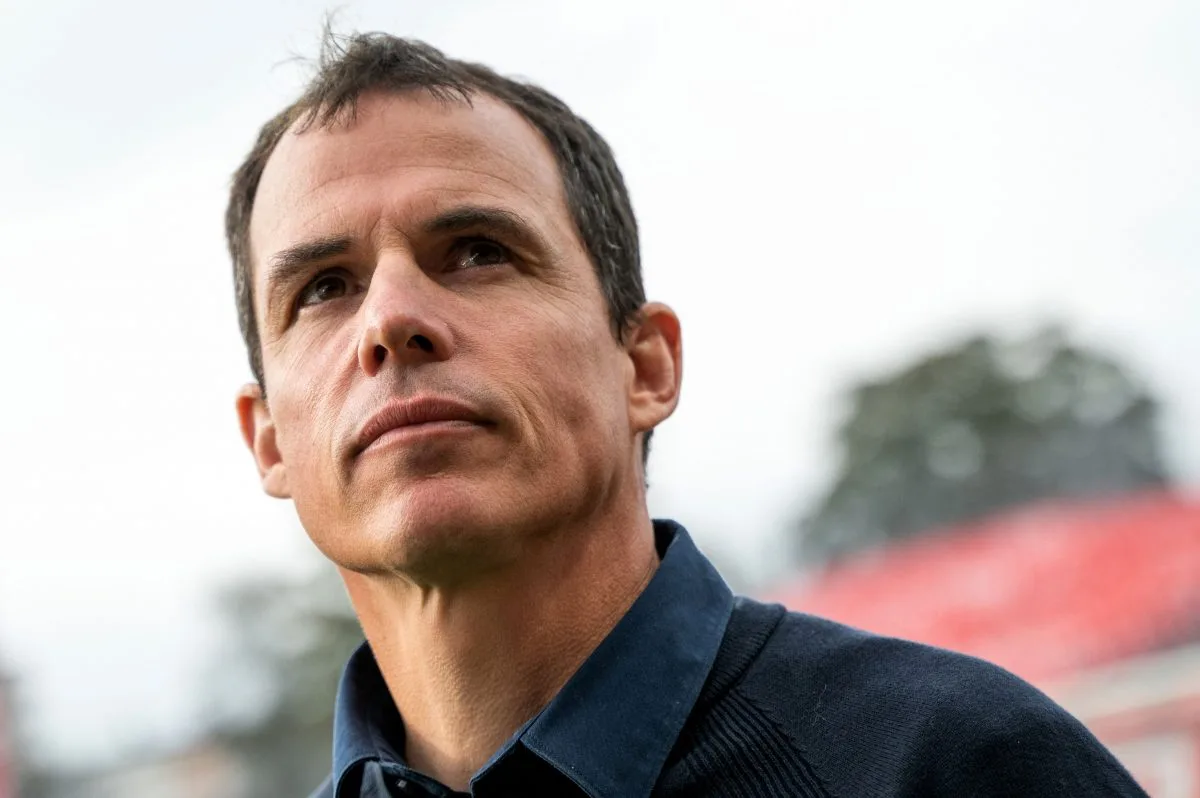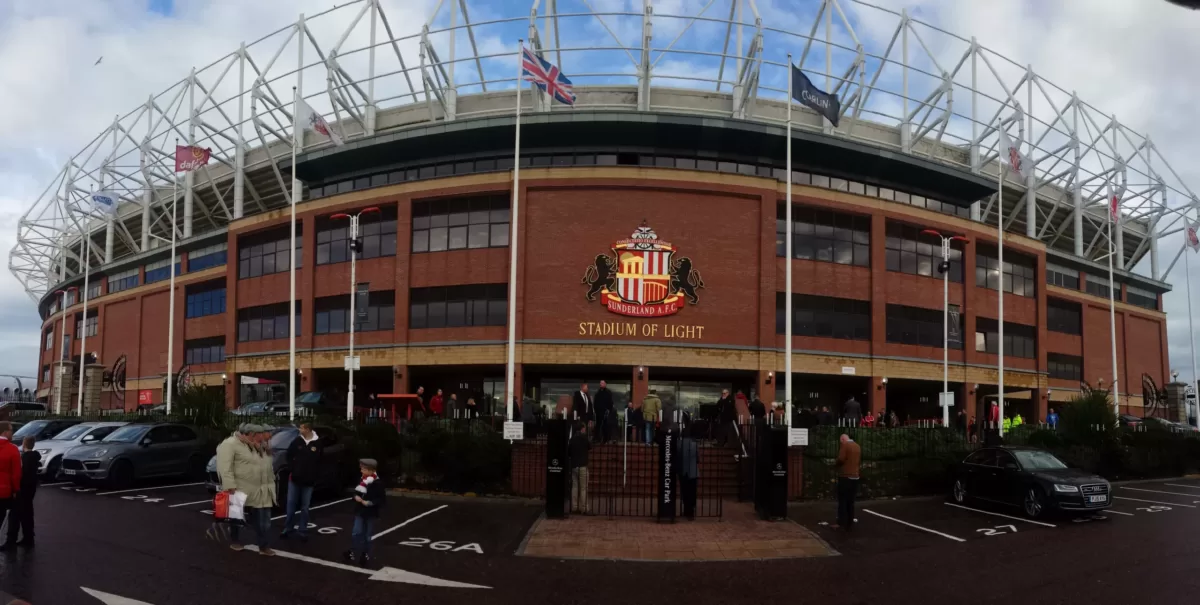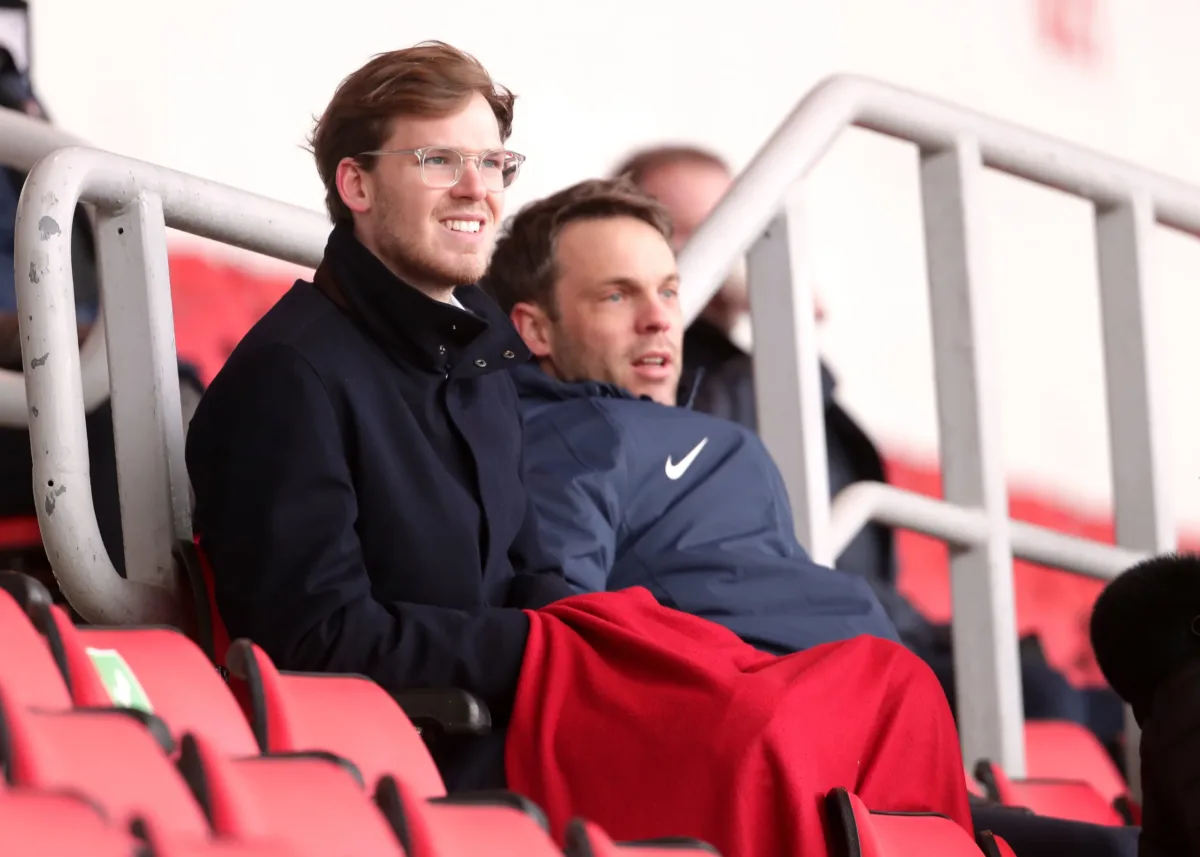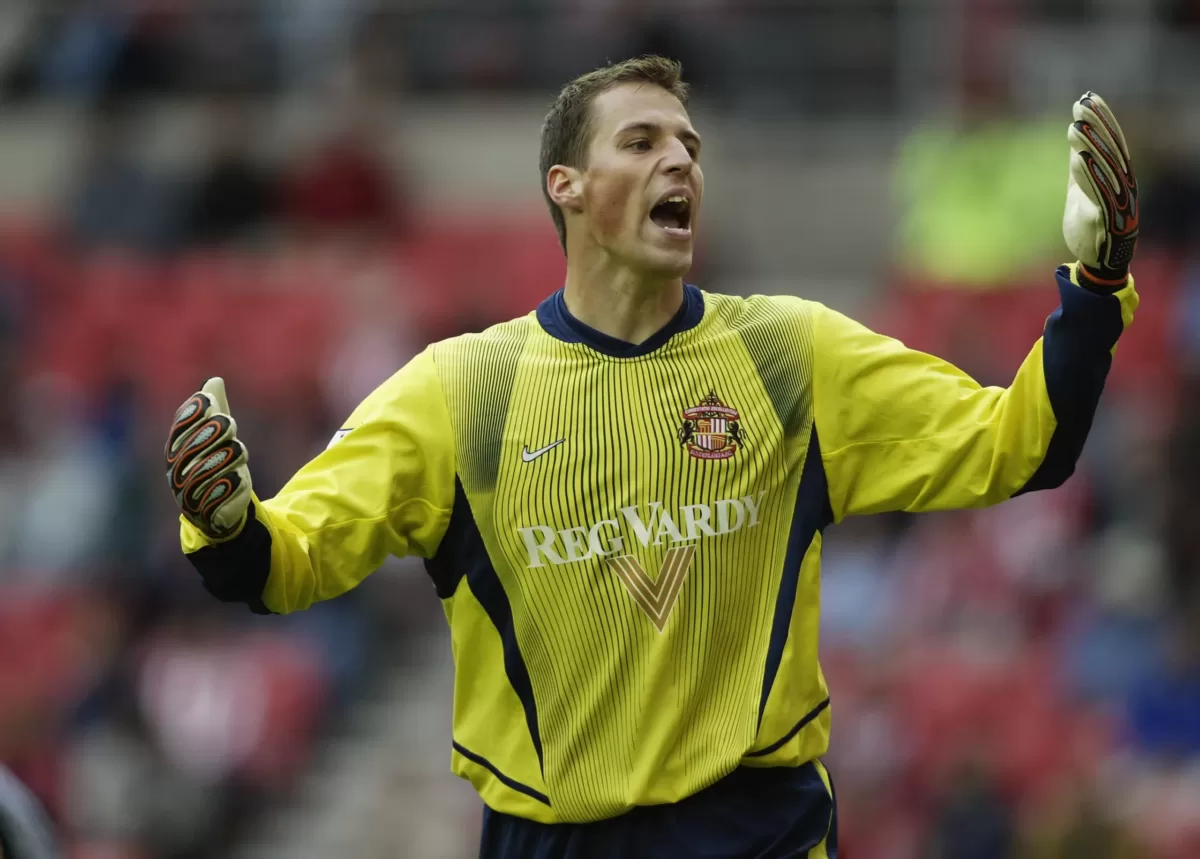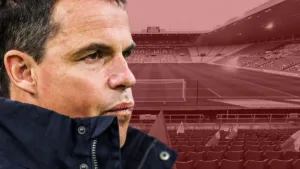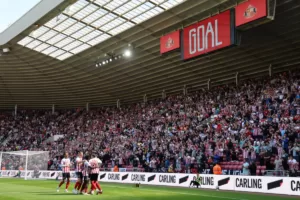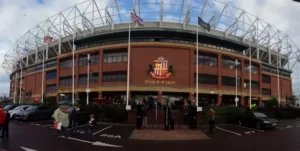March 4, 2023, 4.50pm. This was the exact moment Sunderland AFC’s recruitment ‘model’ met cold, wet, reality.
On an afternoon as miserable as the weather, the bruising defeat to Alex Neil’s Stoke City, was a perfect, cyclone of a storm.
It was a match that whipped up all the club’s current weaknesses, dropping them bedraggled onto the Stadium of Light pitch where, at full time, they were laid bare for supporters to angrily assess the damage.
So, in these calmer post-match moments, let’s sort through the debris and try to make sense of:
- No fit number 9 to act as focal point for majority of the season
- No fit recognised defensive midfielder to protect the back four
- A squad lacking in experience and a failure to continually address gaps leaving…
- A side too lightweight to consistently combat physicality, especially now opposition teams have sussed it’s easier to play without the ball and be aggressive instead
- A team understandably naïve and lacking that know-how to utilise game management when opponents begin to build momentum.
There’s a model on Wearside, certainly. It’s been in place for two years. But when you set out the consequences of it like that, is it truly an effective one?
For the avoidance of doubt, there is much to like about what the Black Cats’ current ownership group is trying to build here. One could write a fairly long list. Maybe even longer than the one above. Indeed, much has been written and spoken about these positives within this parish.
Yet, at a time when everything wrong with the club’s approach begins to bite – and bite hard – it’s only fair to scrutinise those apparent failings. Especially considering that they’re not new. Instead, sadly, these issues are beginning to spin on repeat.
But, more on that later. The real frustration is that, even taking injuries into account, these concerns are continually born from Sunderland AFC’s own making.
Why not the best of both worlds?
In short, and this feels like stating the obvious, it shouldn’t be a model with seemingly just one specialism – youth development. It should be a more dynamic blueprint allowing for a better blend of both youth and experience. After all, the average age of teams getting promoted are far older than our current youthful crop.
As a footballing philosophy it sticks too rigidly to such a narrow lane and leaves the club overly exposed in moments like we’re seeing now. There appears to be no room for flexibility. That must change.
For balance it should be recognised that there’s a smattering of seasoned pros in the Black Cats’ ranks. However, not near enough. It’s also possible to have experience at a young age and once more, to be fair, Dan Ballard amongst others fall into this category.
All in all though, there are too few. But, the real take home point here is that recently the average age of the Lads’ starting XI was around 21 and those who get promoted are 27.8.
Any effective recruitment model should also be able to respond in a timely fashion when important squad holes need plugging.
With a January transfer window that failed to address any of those left gaping, these current woes are very much self-inflicted, just at the point when the season was beginning to really ignite.
But, if this sounds familiar it’s likely because it is. And that can’t help but compound supporters’ frustrations.
A little bit of history repeating?
So, as promised earlier, let’s rewind briefly to the festive period 2021. Sunderland AFC sat at the summit of League One after thumping Doncaster Rovers and Sheffield Wednesday.
A heroic effort to sustain the automatic promotion push. Even more prodigious when you consider it was by a group consisting of many inexperienced players. None more so than Calum Doyle, Dennis Cirkin and Dan Neil et al. Up until the calendar turned over onto 2022, most of these youngsters were performing admirably. The philosophy was really firing.
But, was it fair to expect the half dozen or so youngsters to keep relentlessly going? Was it reasonable to ask those who, before the campaign got underway had hardly kicked a ball in senior football and were then regularly thrust into the starting XI?
As Sunderland AFC won just one of their ten games between the new year and Neil’s arrival in February, arguably not.
Neil spoke about the issue at the time. Of Doyle in particular he said: “The kid is 18, he’s played a hell of a lot of games, and he has huge potential as a player. But, if you keep playing him and playing him, as has happened, the difficulty you are going to find is that at some point, he is going to burn himself out in his first season at this level.”
The January 2022 window required experienced heads ready to hit the ground running. The squad was in dire need of bolstering to provide a breather for those younger players who had excelled up until then. Some may point to Jermain Defoe’s catastrophic return as bringing in that requisite experience.
Upon seeing his level of fitness at the time, it’s fair to say he could hardly be described as someone who was ready to hit the ground running. Unless he was hitting the ground to have a nap. After a gentle jog.
Although there was a positive ending (via Wembley) that salvation in the form of a few older pros to make life easier, didn’t materialise. Ultimately, given the eventual success, it’s easy to forgive those in charge for that now. But, Neil was left with a squad consisting of burnt out youngsters and players signed in January lacking match fitness.
Neil acknowledged this point too adding in February 2022: “What is worse? Playing the guy who has played far too much, or the one who has hardly played at all?”
The reality was Sunderland’s season went into free fall before Neil helped salvage it. On course for a title win at Christmas it ended securing play-offs on the last day. To even achieve that took an incredible turnaround of fortunes.
But, because of the limited options in key positions, injuries mounting, and experienced players moved on, young lads were flogged week in week out.
Why go over old ground? Well, crucially, this is where we find ourselves again. If January 2022 required experience so too did the one in 2023. It’s just a duplication of last season’s situation. Take out the World Cup and the decline is even around the same time too.
It’s surely no coincidence that Mowbray is also beginning to make the same noises as Neil was. In early February, the current head coach commented: “The challenge is the attritional side of the league. Here we are, we have three, potentially four midweek games coming back-to-back with a squad of 14, 15 players if we’re lucky.
“It’s a massive ask to keep going to the well every three days.” He added recently, “I can see the players after the game, and the can barely move, they are absolutely exhausted with the effort that they’re putting into football matches.”
Sell Sell Sell!
The recruitment team are superb at spotting young talent. Let’s be clear about that. If that’s the club’s ‘model’ then it excels. Yet, if this so called ‘model’ is revealing itself to be anything in these last five transfer windows, it’s that it’s more about assembling potential, with a view to presumably selling for future profit, rather than one that can truly ride the rigours of a brutal campaign, in the present.
A season doesn’t end in January or February.
How then is this blueprint best described? It’s a financial model rather than an agile, pragmatic, footballing one. It’s the club aiming for long term success via some quixotic self-sustainability.
Lets copy Brentford’s homework
At this point, it’s probably relevant to introduce the club’s inspiration behind this idea. It all stems from the ‘Brentford’ route. David Jones, SAFC’s Non-Executive Director admitted this at a recent Red & White Army Supporters meeting.
There is nothing wrong with this notion by the way. Spend frugally using data to underpin your transfers and sell them on when the time is right for huge amounts.
Certainly, buying Neal Maupay, Ollie Watkins and Said Benrahma for a combined £9.8million and selling them for £77million sounds admirable. Because it is, as long as funds are reinvested back into the squad.
Yet, the Bees’ Director of Player Recruitment, Lee Dykes, recognised the need for a blend of youth and experience within their own model. Something which does not seem to resonate as deeply here on Wearside.
Speaking about Brentford’s arrival in the Premier League in 2021 and his summer transfer plans, Dykes said: “There was a collective understanding that we needed more experience and a lot of the signings in 2019 were not Brentford-like. Our reasoning was that if you sell Konsa and Mepham, both for £12million, that’s all good. But, it leaves you with two young players next to each other.
“If you stick an experienced player in between them – and Brentford were playing three at the back – you might to pay £4million, but the other two will be sold for £15million, because they will improve, the team will concede fewer goals. If you have four or five experienced players, your other younger assets will rise in value because you’ll finish higher up the table and you become better.”
Sounds logical, doesn’t it?
With the January 2023 window now closed, did we bring in any experience to chime with Brentford’s model, just when it was needed most? Did we replace those few older pros who were out with long term injuries?
We know the answer. But, for completeness, Joe Anderson, hadn’t played senior football prior to joining, neither had Pierre Ekwah, Isaac Lihadji had been frozen out at Lille having not played for months and Joe Gelhardt has sadly been thrown in at the deep end being asked to play a role he does not seem suited to or prepared for. Of the four signings brought in, none have thus far made any immediate impact and upon seeing their profile, nor should it have been expected.
One of the handful of older heads was also moved out on loan. Perhaps Bailey Wright wasn’t contributing much on the pitch prior to departing but leadership is crucial behind the scenes and that voice is now lost. That’s not to say these new signings can’t achieve something in the future and may yet still this season. But, that’s perhaps where for the club, future aspirational profit has come before short-term gain. It offers little comfort when the season is yet again on the verge of freefall.
Fair’s fair
It’s only fair to point out that Sunderland AFC’s current group have come up against tough tests during the campaign thus far and have nearly always found the answers. However, as we’ve seen before, it simply isn’t right to expect such an inexperienced bunch to continually perform in such relentless fashion.
It’s also only fair to provide those players, and indeed Mowbray, with all the tools required to lift Sunderland AFC as high as possible. To that end, the club haven’t signed a permanent striker since Ross Stewart in January 2021.
Despite crying out for a third in the summer we’ve somehow contrived to be in a situation where there’s no fit number 9 available. Twice, would you believe, in the same season.
Both injuries to the Scot were unlucky, of that there is no doubt. That said, if the summer should have taught the club anything, it was to not gamble on a lack of depth up front. Not again.
This lesson hasn’t been learned and it’s okay to say that is damning, whilst also recognising other broader good work. Nuance is important in the overall debate.
True, the players on the pitch will need to do some soul searching after Saturday’s mauling. Yet, as the above seeks to highlight, they should not shoulder all the blame. Neither should Tony Mowbray, whose team selection in midfield caused some head scratching before the weekend’s torrid 90 minutes but has otherwise been exemplary since joining.
The Mowbray ‘second half of the season slump’ has already been mentioned in some quarters. However, it’s more likely that any previous decline, certainly during his time with Blackburn Rovers at any rate, was down to his squad also being one of the youngest in the Championship. More a babysitter it seems than manager.
In conclusion
To sum up – if Sunderland AFC’s transfer model gets credit during the good times, it must shoulder the blame when it’s almost certainly largely at fault during the bad.
Expectations were dialled in for ‘pragmatic survival’ at the start of the campaign. So, why must we complain at all now, you may ask?
Well, when those expectations were initially exceeded, before performances fell off a cliff, and given the opportunity that was presenting itself in the league for the play-offs to be secured, it was surely incumbent upon the ownership group to learn from past missteps and help not just cement our place in the second tier but potentially rise from it.
The nettle was there to be grasped.
Yet, because of the club’s stubborn insistence on sticking to a ‘model’ lacking willingness to compromise, we appear to have just stung ourselves. Again.












